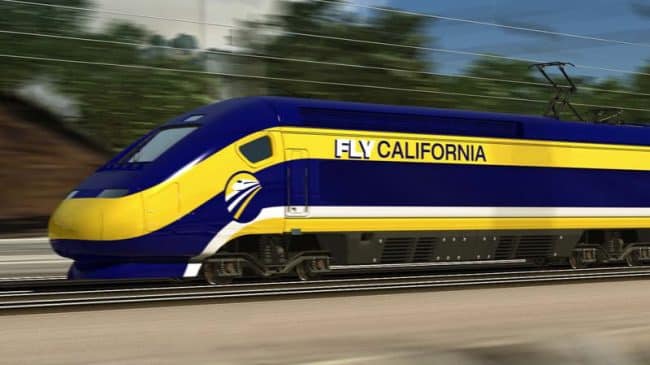This Taxpayer Risk Assessment examines the financial risks to taxpayers of the proposed XpressWest high-spreed rail project from Victorville to Las Vegas. There would be no need for a Taxpayer Risk Analysis without government (taxpayer) involvement. For example, if a bus company were to establish a new service between Victorville and Las Vegas, there would be no taxpayer financial exposure under normal circumstances. The company would either succeed or fail depending on its ability to cover its costs through various commercial activities. As with private loans, the ability to secure the loan depends on the bank’s assessment of its successfully pay off-a natural inhibitor of risky propositions. XpressWest is intended to be self-supporting, with the construction and financing expenses and operating expenses covered by commercial revenues, principally passenger fares. Tellingly, the project sponsors are apparently unable to arrange conventional private sector financing and seek a federal loan with a subsidized interest rate, which would pass the risks on to taxpayers if the forecasted ridership should fail to materialize. Moreover, in the event of financial difficulty, state and local taxpayers could face significant pressure to provide funding to complete the system or to subsidize its operations. Thus, a Taxpayer Risk Assessment is necessary.
This Taxpayer Risk Analysis reviews ridership, revenue and capital cost forecasts to the extent that they are available. The principal focus is on ridership, since the repayment of the proposed federal loan from taxpayers is entirely dependent upon commercial revenues, principally the fares that will be paid by riders and ancillary revenues, such as advertising.
Since XpressWest, formerly called DesertXpress, is nominally a commercial (private) project, not all relevant information is publicly available, which makes it necessary to rely on broader industry data for some elements. However, even substantial variations in the assumed data that is not directly available for the project would make little difference in the overall financial conclusions of the Taxpayer Risk Assessment.
Should the Victorville to Las Vegas train commercial revenues fail to pay operating costs and debt service, the project would not have enough money to repay the federal loan, resulting in a default. Taxpayers would lose up to $6.5 billion in principal and any unpaid interest, an amount that could climb to more than $7.5 billion if a full six-year deferment of repayment is granted. The Taxpayer Risk Assessment identifies a number of concerns that could result in taxpayer losses.
There are six principal risks to taxpayers from the XpressWest Victorville to Las Vegas train.
- A Speculative Consumer Market: The greatest risk is that the potential consumer market for the train is far smaller, in geographical terms, than is assumed in the project documentation (see Part 3 of the full study). There is no parallel for large numbers of drivers and airline passengers to travel well outside the urban areas in which they live to connect to a train (or plane) to any destination, much less one so close to Southern California as Las Vegas. As a result, common sense finds ridership and revenue likely to be a mere fraction of forecast. This would likely make repayment of the federal loan impossible. This risk to taxpayers of an exaggerated market is “unknown, but potentially severe.”
- Materially Changed Circumstances (Not Reflected in the FEIS Forecast): Even if the consumer market were geographically as large as assumed, growth in the Las Vegas tourist market has been far below forecasts in recent years. As a result, the base ridership figures are implausibly exaggerated and need to be revised downward (see Part 5). The ridership and revenue risk to XpressWest from this factor is high and risks make paying the federal debt impossible, calling for a taxpayer bailout.
- Ridership and Revenue Forecast Model Concerns: The international record indicates that rail projects tend to average approximately 39% less in ridership than forecast. Specific factors of the ridership forecast for the Victorville to Las Vegas train indicate that actual ridership is likely to be 39% to 70% less than the FEIS forecast, even after adjustment for the materially changed circumstances. These factors include an optimistic estimate of the base year market, a market growth rate greater than in pre-recession years, an optimistic assumption of attraction from cars and an optimistic bus attraction assumption. Such rosy predictions increase the likelihood that the federal loan would not be repaid.
- Capital Cost Escalation: Capital cost escalation for rail projects has been pervasive in similar projects, suggesting that capital cost escalation is likely to occur on the Victorville to Las Vegas train (Part 6), leaving the project impossible to complete and triggering a default on the federal loan. Governments (federal, state and local) would be faced with difficult decisions about whether to complete the project, at elevated costs, with public funding or to fund dismantlement of a partially completed system.
- Likely Commercial Losses: Even if there is no capital cost escalation, it is unlikely that the business plan for this project is flexible enough to deal with all the variations discussed above without suffering either higher costs or commercial revenue shortfalls. This inflexibility could lead to a default on the federal loan with the loss paid by taxpayers. Further, political pressure to keep the train operating could lead to a federal Amtrak-style takeover with subsidies, or the train could be operated with state and/or local subsidies. The risk of taxpayer loss from this factor is evaluated at “high.”
- Higher Cost for Highway Expansion: Use of the median of I-15 for the Victorville to Las Vegas train could preclude the most cost-effective options to expand highway capacity (see Part 8). This would increase costs to taxpayers and highway users. The risk of higher expansion costs on I-15 is evaluated as “moderate.”

